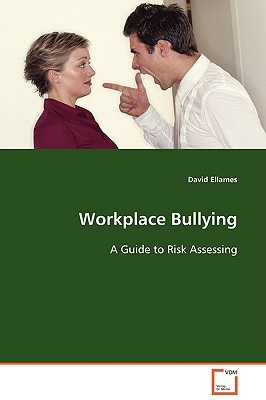
- We will send in 10–14 business days.
- Author: David Ellames
- Publisher: VDM Verlag
- ISBN-10: 3639125320
- ISBN-13: 9783639125320
- Format: 15.2 x 22.9 x 0.7 cm, softcover
- Language: English
- SAVE -10% with code: EXTRA
Reviews
Description
This work examines the nature of workplace bullying and its possible origins in the context of organisational cultures. Consideration is given to the problems created for legislators, employers and employees alike by the absence of a precise and succinct definition that promotes consistency instead of the plethora of perceptions currently in use. The importance of distinguishing between types and reasons for bullying relationships is emphasised, as recognition of such differences is essential for the effectiveness of any anti-bullying policy. A study with two Colleges of Education suggests a possible relationship between the perceived level of management understanding of the respondent's workload, and the effectiveness of the institution's anti-bullying procedures, possibly reflecting the working cultures of distinct occupational groups. A proactive recruiting policy is outlined, while the intention of prominent reactive procedures is to rapidly address and fairly resolve bullying allegations. This book will be of interest to human resource departments and others responsible for developing procedures to minimise this insidious workplace hazard.
EXTRA 10 % discount with code: EXTRA
The promotion ends in 17d.15:22:24
The discount code is valid when purchasing from 10 €. Discounts do not stack.
- Author: David Ellames
- Publisher: VDM Verlag
- ISBN-10: 3639125320
- ISBN-13: 9783639125320
- Format: 15.2 x 22.9 x 0.7 cm, softcover
- Language: English English
This work examines the nature of workplace bullying and its possible origins in the context of organisational cultures. Consideration is given to the problems created for legislators, employers and employees alike by the absence of a precise and succinct definition that promotes consistency instead of the plethora of perceptions currently in use. The importance of distinguishing between types and reasons for bullying relationships is emphasised, as recognition of such differences is essential for the effectiveness of any anti-bullying policy. A study with two Colleges of Education suggests a possible relationship between the perceived level of management understanding of the respondent's workload, and the effectiveness of the institution's anti-bullying procedures, possibly reflecting the working cultures of distinct occupational groups. A proactive recruiting policy is outlined, while the intention of prominent reactive procedures is to rapidly address and fairly resolve bullying allegations. This book will be of interest to human resource departments and others responsible for developing procedures to minimise this insidious workplace hazard.


Reviews